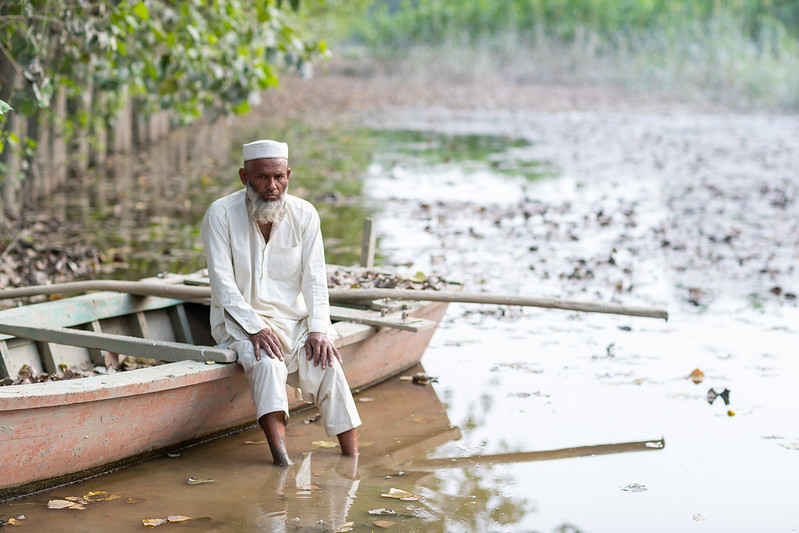Deal is a turning point in acknowledging the vast inequities of the climate crisis
What the new "loss and damage" fund needs for success
November 22, 2022

Recent floods in Pakistan covered a third of the country, with devastating consequences for families and the economy.
The UN Climate Change Conference, COP27 may come to be remembered for missed opportunities. For example, to progress commitments to limit temperature rise of 1.5C degrees; or strengthen language on reduction of fossil fuels use; or address the gap in adaptation efforts.
But COP27 should also be deservingly remembered for its agreement on a historic “loss and damage” fund for climate impact in developing countries. The hard-won deal is a turning point in acknowledging the vast inequities of the climate crisis.
For the first time in 30 years of climate talks, developed countries will provide finance towards recovery and rebuilding of poorer countries stricken by climate-related disasters. In the initial flurry, more than US$300 million has been pledged by European nations.
The fund will support the most vulnerable countries and severely impacted middle-income countries can apply for aid too. A transitional committee with members from 24 countries will make recommendations for countries to adopt at the COP28 summit in November 2023.
Now comes the difficult part; the fund must be set up and financed. Institutional arrangements and governance still must be detailed; new sources of funding identified and expanded. The following five steps are critical:
-
Quantification. The first thing to decide is how much countries will receive in loss and damage. Will funds assess accumulated damages, accumulated losses over a specific baseline, or annualized? Is the present value of loss and damage over a future time horizon defined? These are important factors to consider to avoid perverse incentives to meet global climate targets.
-
Assessment. How will loss and damage be assessed, both quantitatively and non-quantitatively? How do we treat accounting of irreversible damages? How will the loss of Indigenous cultural heritage or loss of national and local ecosystems be assessed in a mutually agreeable way? Existing methods to account for loss and damage associated with natural and man-made hazards may not consider slow and accumulative impacts associated with climate change, such as irreversible loss of livelihoods or productive systems. A common methodology to value life related to loss and damage will be important, if difficult due to ethical considerations.
-
Attribution. Countries must be supported to monitor and spell out attribution clearly. What baselines will be agreed for attributing loss and damage, especially as climate impacts are already manifesting across landscapes? Disentangling unfolding impacts from past disaster events or other slow processes, and natural factors such as salinization and loss of biodiversity, may pose inadequate risk governance issues.
-
Payment monitoring. A fund needs to be capitalized, it needs to be managed. Once the mechanics of the fund have been determined, the need for an impact monitoring system needs to be questioned and allocations reviewed and vetted to ensure funds are used on environmentally, economically and socially progressive initiatives. Will decisions concerning the use of funds be left to countries to work out? Or will funds be conditioned and linked to proof? Alignment and coordination with existing UNFCCC funds and new ones such as World Bank-managed Global Shield Financing Facility, designed to help developing countries access pre-arranged resources before a disaster strikes for financing recovery from climate disasters and natural hazards, will be critical. Tracking where funds are flowing from and to will also be key. We must take care that current constraints facing developing countries from accessing existing funding sources do not bleed into the new fund.
-
Evaluation and optimization. Lessons should be derived from existing climate funds to channel private finance towards low carbon investments. The fund must be complemented by a suite of funding mechanisms to channel adequate funding to countries dealing with the worst impacts of climate change. The new Indonesia Just Energy Transition Partnership, announced at the G20 Summit held in parallel with COP27 to will mobilize US$20 billion to accelerate a just energy transition. The recently-pledged resources for the Global Environment Facility’s Least Developed Countries Fund and Special Climate Change or the upcoming replenishment of the Green Climate Fund, will target climate adaptation needs of low-lying and low-income states.
Recovery is much needed. But focusing on that only will be akin to treating symptoms, not causes. Getting the details right on the loss and damage fund must not divert attention from an even more urgent priority; to fast-track a low carbon and climate resilient transition and to scale solutions fast.
UN Secretary-General, António Guterres said the fund is; “an important step towards justice” for poor countries that have done little to cause the climate crisis, but are suffering its worst impacts.
As the world moves to address the climate crisis, the loss and damage fund is undoubtedly a welcome breakthrough and an essential step forward to build more resilient societies. But we must ensure its successful operation – something UNDP is committed to supporting, drawing on its multi-decade experiences of supporting countries to meet climate targets.

 Locations
Locations